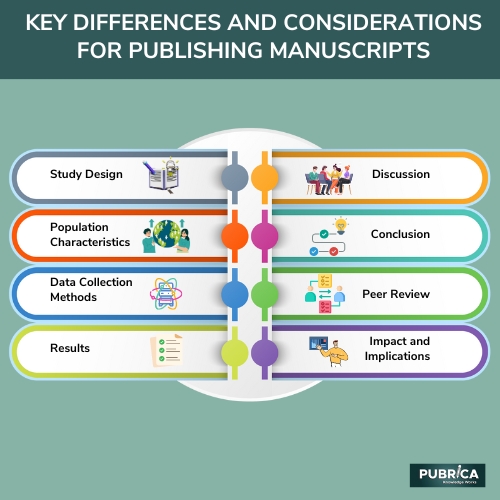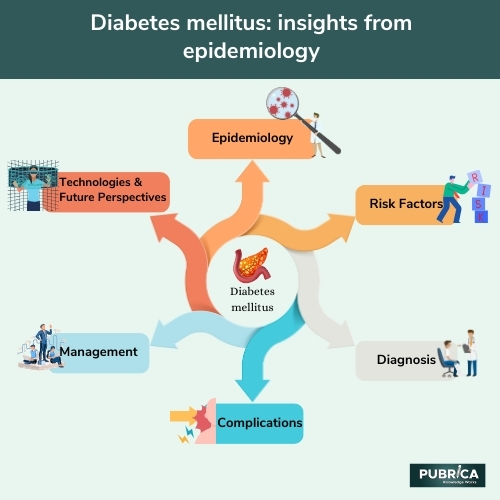
What are the different epidemiological studies that can be conducted in respiratory research?
November 23, 2023
How Does Meta-Analysis Work with Cohort Study?
December 30, 2023Brief overview
Diabetes mellitus (DM) is a serious public health issue across the world. According to current worldwide estimates, this illness affects 415 million individuals and is expected to impact 642 million by 2040. A remaining 193 million diabetics go undetected since the disease is generally mild or asymptomatic, particularly in type 2 diabetes (T2DM). The Middle East and North African (MENA) area, which includes all Arab states, has the second highest diabetes prevalence rate (10.7%, age-adjusted) behind North America and the Caribbean (11.5%). This scenario is expected to persist for the next two decades, if not longer.
Importance of publishing epidemiological manuscripts on diabetes
Publishing epidemiological manuscripts on diabetes is crucial for advancing our understanding and management of this prevalent health issue. These publication manuscripts provide a platform for disseminating valuable research findings, shedding light on the disease’s prevalence, risk factors, and trends. Sharing epidemiological data fosters collaboration among researchers, healthcare professionals, and policymakers, enabling evidence-based decision-making. Moreover, these manuscripts contribute to public health initiatives by informing preventive strategies and interventions. Continuous dissemination of such information empowers communities to make informed lifestyle choices, ultimately reducing the burden of diabetes and its associated complications. In essence, the importance of publishing epidemiological manuscript journals on diabetes lies in their potential to drive scientific progress, improve patient outcomes, and guide public health efforts.
- To know more about publication support services, check our study guide on the process of publishing a research paper.

Publishing diabetes epidemiological manuscripts involves conveying research findings related to the prevalence, distribution, and determinants of diabetes in a population. Here are key differences and considerations for publishing such manuscripts:
- Study Design:
- Cross-Sectional Studies: These provide a snapshot of diabetes prevalence at a specific point in time.
- Longitudinal Studies: These follow individuals over time to understand the development and progression of diabetes.
- Population Characteristics:
- Consider the demographic characteristics of the studied population, such as age, gender, ethnicity, socioeconomic status, and geographic location. Highlighting any unique features can add value to your manuscript.
- Data Collection Methods:
- Specify how diabetes data were collected (e.g., clinical measurements, surveys, laboratory tests). Highlight the validity and reliability of the methods used.
- Results:
- Present the main findings concisely, including prevalence rates, incidence rates, and any identified risk factors associated with diabetes. Use tables, figures, and graphs to enhance clarity.
- Discussion:
- Interpret your results in the context of existing literature. Discuss the implications of your findings for public health, clinical practice, or future research.
- Conclusion:
- Summarize the key findings and their significance. Discuss potential avenues for future research in the field of diabetes epidemiology.
- Peer Review:
- Submit your manuscript to a reputable journal with a focus on diabetes, epidemiology, or public health. The peer-review process ensures the quality and validity of your research.
- Impact and Implications:
- Discuss the potential impact of your findings on diabetes prevention, management, or policy. Highlight any actionable insights that can contribute to improving public health.
Remember to follow the specific guidelines of the target journal and adhere to reporting standards such as STROBE (Strengthening the Reporting of Observational Studies in Epidemiology) for observational studies.
Common challenges in diabetes epidemiological research
Descriptive epidemiology of diabetes research faces numerous challenges that impede a comprehensive understanding of the disease. Firstly, data quality issues arise due to variations in diagnostic criteria and data collection methods across studies. Additionally, the dynamic nature of diabetes necessitates long-term studies, but participant retention proves challenging. Socioeconomic disparities further complicate research, as access to healthcare and lifestyle factors vary widely. Genetic and environmental factors contribute to heterogeneity within diabetic populations, demanding large sample sizes for meaningful analyses. Moreover, the multifaceted nature of diabetes requires interdisciplinary collaboration, posing logistical challenges. Standardization of methodologies and improved international cooperation are crucial for overcoming these hurdles and advancing diabetes research.

Impact of socioeconomic factors on diabetes epidemiology
The prevalence of diabetes is intricately linked to socioeconomic factors, shaping its epidemiological landscape. Access to education, income levels, and employment opportunities directly influence lifestyle choices, impacting diet and physical activity. Individuals in lower socioeconomic strata often face barriers to healthy living, predisposing them to diabetes. Limited healthcare access further exacerbates the issue, hindering timely diagnosis and management. Additionally, cultural norms and societal structures play a role in influencing dietary habits and stress levels. Addressing socioeconomic disparities is crucial for effective diabetes prevention and management, necessitating comprehensive strategies that encompass education, healthcare accessibility, and economic empowerment to mitigate the impact on vulnerable populations.
Conclusion:
In conclusion, this diabetes epidemiological manuscript contributes valuable insights into the prevalence, risk factors, and demographic patterns associated with diabetes. Leveraging a study design approach and robust bio-statistical analyses, our findings illuminate the complex landscape of diabetes epidemiology. We underscore the importance of diabetes in informing public health strategies, clinical interventions, and future research directions. Despite limitations, our study enhances the understanding of diabetes within the specific population or context, emphasizing the need for targeted interventions. This work, adhering to ethical standards and methodological rigour, invites further exploration and collaboration in addressing the global burden of diabetes.
- Check our Examples to get an understanding of our adaptability across publication support topics and subject domains.
About Pubrica
Pubrica’s team of researchers and authors create scientific and medical research services that may serve as a valuable resource for practitioners and authors. The Publishing process can be a daunting task. At Pubrica, we translate your research writing into a publishable manuscript. We guide you through the entire life cycle of your publication, including identifying the most suitable journal, executing the peer review, manuscript editing, statistical review and providing post-submission support. We ensure your manuscript content is succinct, structured, and cohesive by following the International Committee of Medical Journal Editors, ICMJE guidelines. We select, review, prepare, and submit your manuscript and respond to editorial comments.
References
- Mirzaei, Masoud, et al. “Epidemiology of diabetes mellitus, pre-diabetes, undiagnosed and uncontrolled diabetes in Central Iran: results from Yazd health study.” BMC public health 20 (2020): 1-9.
- Reed, Josh, Stephen Bain, and Venkateswarlu Kanamarlapudi. “A review of current trends with type 2 diabetes epidemiology, aetiology, pathogenesis, treatments and future perspectives.” Diabetes, Metabolic Syndrome and Obesity (2021): 3567-3602.



